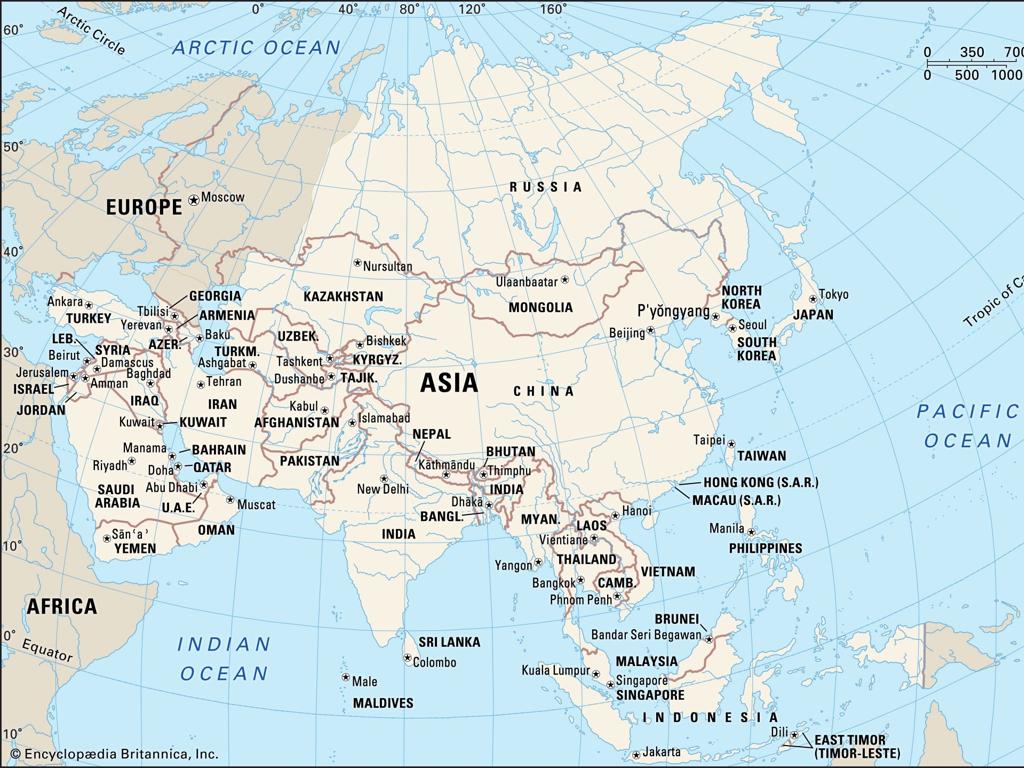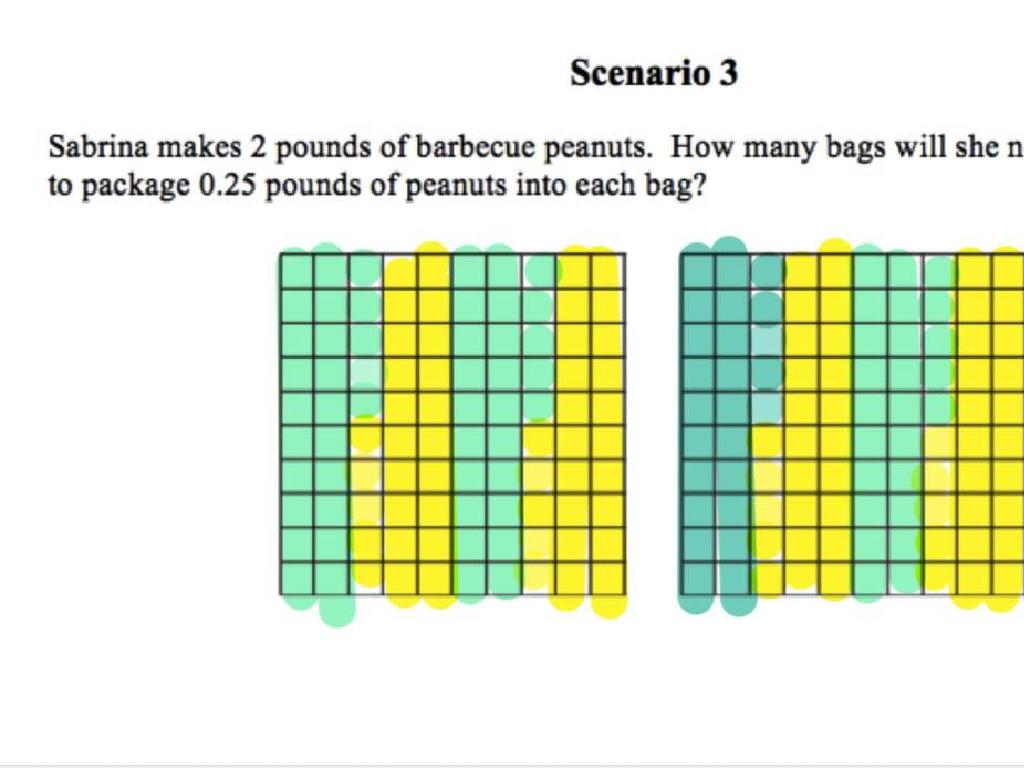Estimate Temperatures
Subject: Science
Grade: Seventh grade
Topic: Units And Measurement
Please LOG IN to download the presentation. Access is available to registered users only.
View More Content
Introduction to Temperature
– Understanding temperature’s role
– Temperature measures how hot or cold something is, crucial for weather, health, and cooking.
– Exploring temperature units
– Celsius is used for weather, Fahrenheit often for cooking, Kelvin in science.
– Real-life temperature applications
– Used in cooking to ensure food safety, in weather forecasts, and to gauge health with body temperature.
– Estimating temperatures
|
This slide introduces the concept of temperature and its significance in various aspects of daily life and science. Temperature is a measure of the thermal energy of a substance, and it’s important for students to understand that it can be measured using different units. Celsius is commonly used around the world and in scientific contexts, Fahrenheit is often used in the United States for everyday applications, and Kelvin is used in scientific research where absolute temperature is required. Discuss real-life applications such as cooking, where proper temperature ensures food safety, weather predictions, and medical uses like checking body temperature. Encourage students to think about how they encounter temperature measurements in their daily lives and to practice estimating temperatures in different units.
Understanding Temperature
– Define temperature
– A measure of how hot or cold something is.
– Temperature vs. molecular energy
– Higher temperature means molecules move faster.
– Heat vs. temperature
– Heat is energy transfer, temperature is the measure of energy.
– Measuring temperature
|
This slide introduces the concept of temperature in the context of science and measurement. Begin with the definition of temperature as a measure of the average kinetic energy of the molecules in a substance. Explain that as the energy of the molecules increases, so does the temperature. Clarify the difference between heat and temperature: heat is the transfer of thermal energy between substances, while temperature is a measure of how hot or cold something is. Emphasize that temperature can be measured using different units, such as Celsius, Fahrenheit, or Kelvin, and introduce the tools used for measurement, like thermometers. Encourage students to think about everyday examples of temperature changes and how they can relate to molecular movement.
Understanding Temperature Units
– Celsius: Global standard unit
– Water freezes at 0°C and boils at 100°C
– Fahrenheit: Used in the U.S.
– Water freezes at 32°F and boils at 212°F
– Kelvin: Scientific temperature scale
– Absolute zero is 0K, no negative values
– Comparing temperature scales
– Learn to convert between them for accuracy
|
This slide introduces students to the three main units of temperature measurement. Celsius is the most widely used temperature scale globally, with key reference points at the freezing and boiling points of water. Fahrenheit is the primary scale used in the United States, with its own reference points for water’s phase changes. Kelvin is the unit of measure for temperature in the physical sciences, starting at absolute zero, where all thermal motion ceases, and there are no negative Kelvin temperatures. Encourage students to understand how to convert between these scales, as this skill is crucial for interpreting weather reports, cooking recipes, and scientific data.
Estimating Temperatures
– Estimating in Celsius & Fahrenheit
– Learn to approximate temperatures in both °C and °F.
– Examples: Freezing, Body, Boiling
– 0°C/32°F for freezing, ~37°C/98.6°F for body, 100°C/212°F for boiling.
– Reference Points for Estimation
– Use known temperatures like ice, body, and steam for guessing others.
|
This slide aims to teach students how to estimate temperatures using Celsius and Fahrenheit scales. Start by explaining the two scales and how they are used in different parts of the world. Provide the three key reference points: the freezing point of water, average human body temperature, and the boiling point of water. These reference points can be used to make educated guesses about other temperatures. For example, room temperature is warmer than ice but cooler than the body, so it’s around 20°C/68°F. Encourage students to think of other reference points and how they might estimate temperatures relative to these.
Reading Thermometers: Celsius & Fahrenheit
– Reading a Celsius thermometer
– Observe the mercury level and note the degree mark
– Reading a Fahrenheit thermometer
– Compare the mercury level to the Fahrenheit scale
– Practice with temperature scales
– Use sample thermometers to read temperatures
– Understanding temperature units
– Celsius is metric, Fahrenheit is used in the U.S.
|
This slide introduces students to the basics of reading thermometers, focusing on the two most common scales: Celsius and Fahrenheit. Start by explaining the physical aspects of a thermometer and how to accurately read the mercury level or digital display. Emphasize the differences between the Celsius scale, used in most of the world and for scientific purposes, and the Fahrenheit scale, primarily used in the United States. Provide practice examples for students to apply their knowledge by reading temperatures on both scales. Discuss why understanding both units is important in science and daily life. Encourage students to ask questions and share any difficulties they encounter while reading the scales.
Converting Temperatures: Celsius & Fahrenheit
– Learn conversion formulas
– Formulas: °F = (°C * 9/5) + 32, °C = (°F – 32) * 5/9
– Follow step-by-step examples
– Example: Convert 25°C to Fahrenheit
– Class exercise on temperature conversion
– Convert given temperatures using formulas
|
This slide introduces students to the concept of temperature conversion between Celsius and Fahrenheit, which is a practical application of their understanding of units and measurement. Begin by explaining the formulas for converting temperatures between the two scales. Provide step-by-step examples to illustrate the process, such as converting 25°C to Fahrenheit. For the class exercise, distribute a worksheet with a range of temperatures in both Celsius and Fahrenheit and ask students to convert them using the formulas. This activity will help reinforce their learning and provide hands-on experience with temperature conversion. Ensure to walk around the class to assist students who may need help and to answer any questions.
Class Activity: Temperature Estimation Game
– Divide into small groups
– Receive items and situations list
– Estimate temperatures in °C and °F
– Use prior knowledge to guess the temperatures
– Discuss and compare with actual temps
– Understanding of temperature scales and real-world application
|
This interactive class activity is designed to help students apply their knowledge of temperature units and estimation skills. By working in small groups, students will engage in collaborative learning, enhancing their communication and teamwork abilities. Provide each group with a diverse list of items and situations, prompting them to estimate the temperatures in both Celsius and Fahrenheit. After the estimation, facilitate a discussion where students can compare their guesses with the actual temperatures, reinforcing their understanding of temperature scales and their ability to estimate temperatures in real-world contexts. Possible items/situations: ice cream, human body, boiling water, a sunny day, a refrigerator. This activity will also help in identifying common misconceptions and provide a platform for immediate feedback and correction.
Estimating Temperatures: Conclusion and Recap
– Recap temperature measurement importance
– Review key concepts and units
– Celsius, Fahrenheit, Kelvin scales
– Engage in a Q&A session
– Clarify doubts, reinforce learning
– Summarize today’s learning
– Highlight practical applications
|
This slide aims to consolidate the students’ understanding of temperature measurement and its significance in various scientific contexts. Begin by recapping why temperature measurement is crucial, touching on its role in daily life and scientific experiments. Review the key concepts discussed during the lesson, including the different units of measurement like Celsius, Fahrenheit, and Kelvin, and how to estimate temperatures. Encourage students to ask questions in the Q&A session to address any uncertainties they may have. Conclude by summarizing the main points of the lesson, emphasizing the practical applications of temperature estimation in real-world scenarios, and reinforcing the importance of accurate measurement in scientific inquiry.





